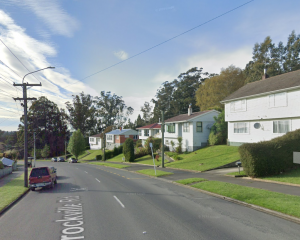Late last year, part of the St John building in York Pl, and part of the Dunedin courthouse in lower Stuart St, both historic buildings, were closed after assessments of their seismic capability found their earthquake strength was under 67% of that recommended in the building code.
Both buildings are to be strengthened, with the work expected to take up to a year to complete.
St John customer and services manager Christine Prince, of Christchurch, said some staff were moved out of the York Pl building to leased premises late last year not because it posed any immediate danger to people using it, but because the timing was good as it was a quiet time of year for the organisation.
Asked why the footpaths and roads were still open around the building if there was a risk parts of it could come down in a moderate earthquake, she said St John was following "best practice" and believed the chance of any danger to the building's users or people outside it was "extremely unlikely".
Some staff were still using the building but would move to the leased premises as more space became available there.
The work on the building had started with an assessment of its historic features.
Acting deputy secretary of courts Robert Pigou said the Ministry of Justice's information on the state of the courthouse also did not suggest road or footpath closures outside it were necessary.
Those were council decisions, and the ministry had informed the mayor and city council of its reasons for closing part of the 110-year-old building.
Footpath and road closures might be required once construction began, but again that was a matter for the council, although the ministry would assist the council in every way it could, he said.
"It's important to note that the building is no more risky than it was last week or 10 years ago, but we have now received an expert opinion that quantifies the risk and advice that remedial work can't be done while these areas of the building are occupied."
Council city environment general manager Tony Avery said confirmation a building was at risk in the event of an earthquake was on its own not enough to have the footpaths and roads around it closed.
There were many buildings in Dunedin that were likely to be at risk in an earthquake, including almost all of George and Princes Sts.
Closing the footpaths and roads around such buildings "would be impractical and we couldn't manage it", Mr Avery said.











